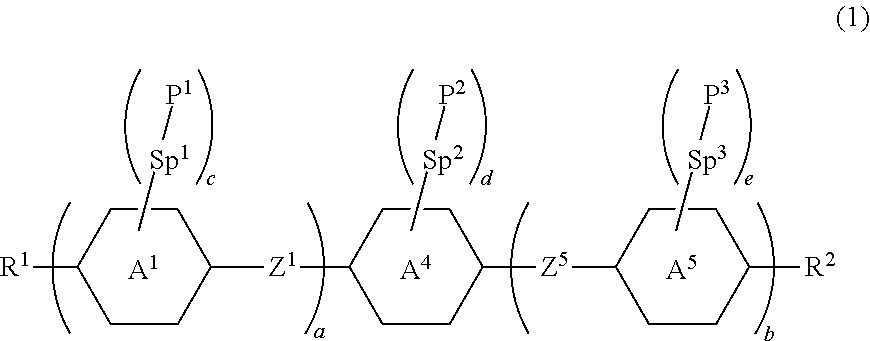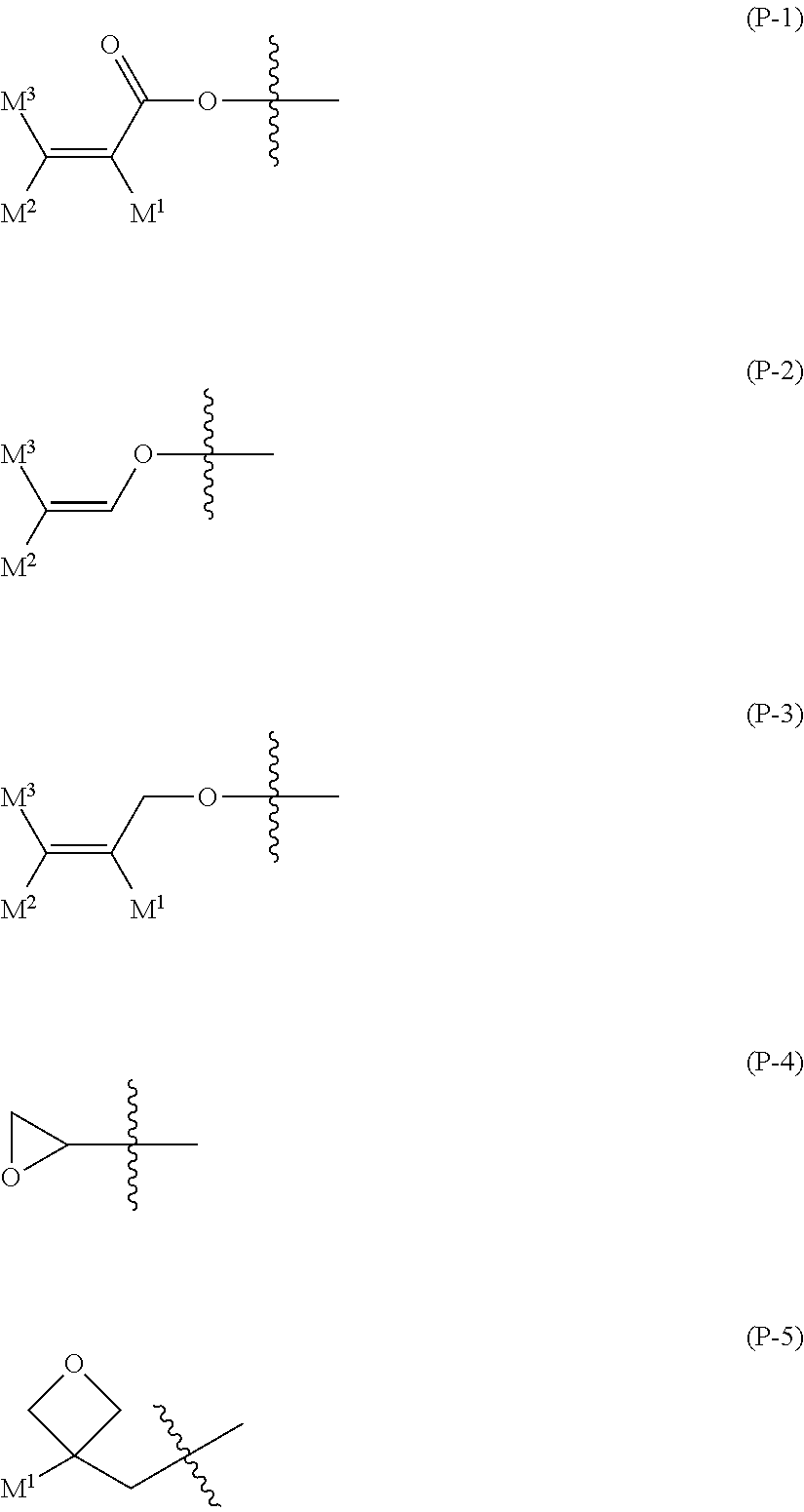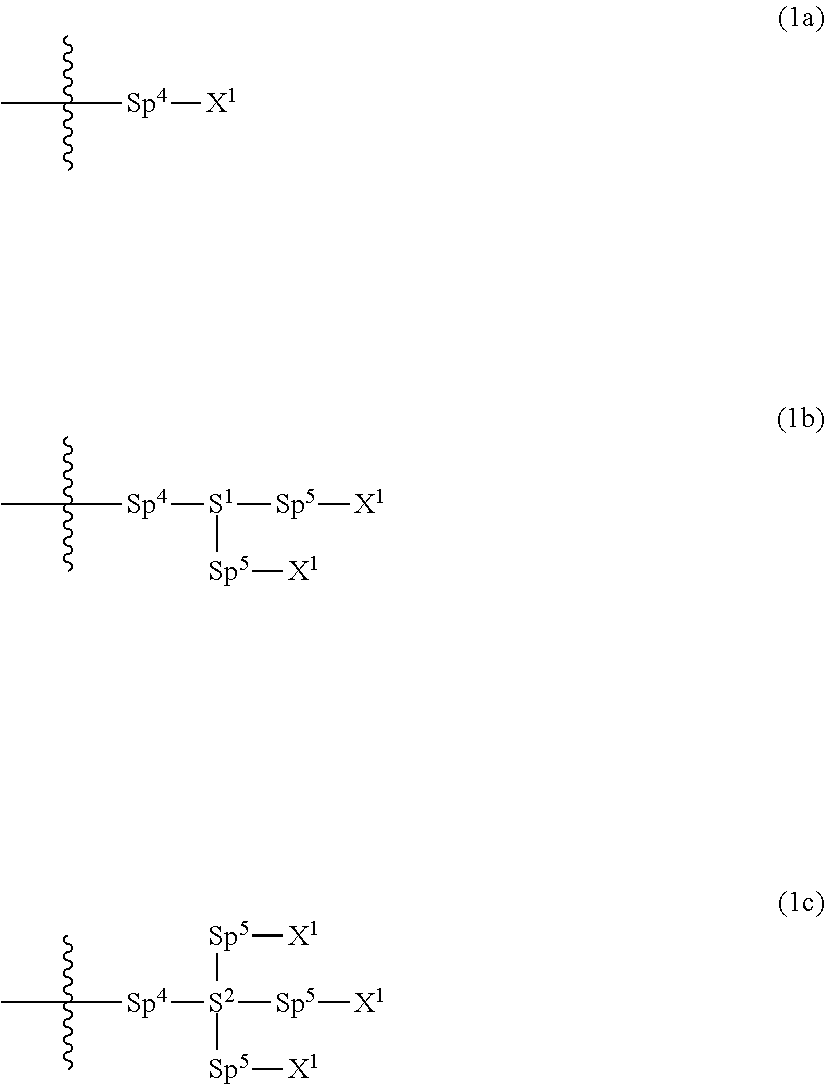Compound having polymerizable group, liquid crystal composition and liquid crystal display device
a liquid crystal display device and polymerizable group technology, applied in non-linear optics, instruments, organic chemistry, etc., can solve the problems of large device contrast ratio, small electric power consumption, unnecessary step of forming alignment films, etc., to achieve high solubility in liquid crystal composition, high chemical stability, and the effect of high capability of aligning liquid crystal molecules
- Summary
- Abstract
- Description
- Claims
- Application Information
AI Technical Summary
Benefits of technology
Problems solved by technology
Method used
Image
Examples
synthesis example 1
Synthesis of Compound (1-1-10)
[0249]
First Step
[0250]Compound (T-1) (4.98 g), compound (T-2) (5.00 g), potassium carbonate (6.88 g), tetrakis(triphenylphosphine) palladium (0.289 g) and IPA (100 mL) were put in a reaction vessel, and the resulting mixture was refluxed under heating at 80° C. for 2 hours. The resulting reaction mixture was poured into water, and the resulting mixture was neutralized by using 1 N hydrochloric acid, and then subjected to extraction with ethyl acetate. A combined organic layer was washed with brine, and dried over anhydrous magnesium sulfate. The resulting solution was concentrated under reduced pressure, and the residue was purified by silica gel chromatography (volume ratio, toluene) to obtain compound (T-3) (6.38 g; 99%).
Second Step
[0251]Sodium borohydride (1.88 g) and methanol (90 mL) were put in a reaction vessel, and the resulting mixture was cooled down to 0° C. Thereto, a THF (40 mL) solution of compound (T-3) (6.38 g) was slowly added dropwise, ...
synthesis example 2
Synthesis of Compound (1-9-16)
[0255]
First Step
[0256]Ethylene glycol (25 g), 3,4-dihydro-2H-pyran (33.88 g), pyridinium p-toluene sulfonate (2.53 g) and dichloromethane (200 mL) were put in a reaction vessel, and the resulting mixture was stirred at room temperature for 5 hours. The resulting reaction mixture was poured into water, and subjected to extraction with dichloromethane. A combined organic layer was washed with brine, and dried over anhydrous magnesium sulfate. The resulting solution was concentrated under reduced pressure, and the residue was purified by silica gel chromatography (heptane:ethyl acetate=2:1 in a volume ratio) to obtain compound (T-5) (27.67 g; 47%).
Second Step
[0257]Then, 2-hydroxyphenyl acetic acid (25 g), tetrabutylammonium bromide (79.22) and methanol (250 mL) were put in a reaction vessel, and the resulting mixture was stirred at room temperature for 18 hours. The resulting mixture was concentrated under reduced pressure, and the residue was purified by ...
synthesis example 3
Synthesis of Compound (1-9-17)
[0273]
First Step
[0274]Compound (T-17) (4.83 g; 85%) was obtained by using 4-bromo-2-ethyl-1-iodobenzene (5.0 g) as a raw material in a manner similar to the procedures in the seventh step in Synthesis Example 2.
Second Step
[0275]Compound (T-18) (8.08 g; 85%) was obtained by using compound (T-17) (4.83 g) as a raw material in a manner similar to the procedures in the tenth step in Synthesis Example 2.
Third Step
[0276]Compound (T-19) (5.89 g; 94%) was obtained by using compound (T-18) (8.08 g) as a raw material in a manner similar to the procedures in the eleventh step in Synthesis Example 2.
Fourth Step
[0277]Compound (T-20) (3.58 g; 54%) was obtained by using compound (T-19) (5.89 g) as a raw material in a manner similar to the procedures in the twelfth step in Synthesis Example 2.
Fifth Step
[0278]Compound (1-9-17) (2.16 g; 70%) was obtained by using compound (T-20) (3.58 g) as a raw material in a manner similar to the procedures in the thirteenth step in Sy...
PUM
| Property | Measurement | Unit |
|---|---|---|
| temperature | aaaaa | aaaaa |
| temperature | aaaaa | aaaaa |
| response time | aaaaa | aaaaa |
Abstract
Description
Claims
Application Information
 Login to View More
Login to View More - R&D
- Intellectual Property
- Life Sciences
- Materials
- Tech Scout
- Unparalleled Data Quality
- Higher Quality Content
- 60% Fewer Hallucinations
Browse by: Latest US Patents, China's latest patents, Technical Efficacy Thesaurus, Application Domain, Technology Topic, Popular Technical Reports.
© 2025 PatSnap. All rights reserved.Legal|Privacy policy|Modern Slavery Act Transparency Statement|Sitemap|About US| Contact US: help@patsnap.com



